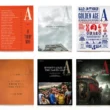It’s a tale of two traditional media sectors which once thought the world of magazines and now find themselves, well, a bit confused. They were once the kings respectively of glossy consumer magazines and (sometimes) high-minded business-to-business ones, famed for their paying readers and profit margins juiced up by advertising. Then came the 21st century.
Now, consumer magazine publishers are getting used to two discordant home truths:
- The sector is declining and is destined to be smaller, less profitable, and less important in the future, squeezed by the products and leverage of ‘new’ media
- The decline is not steady, not as rapid as variously forecast and, for a small number of strong brands, hardly noticeable at all
Magazines coming down to earth
After 50 years of magazine daze, during a heyday when major titles were matching the sales of soaring daily newspapers, consumer publishers came down to earth. Now, they are starting to get realistic about their prospects. That’s one way to interpret the coming together of major US magazine publishers to market their ipad editions. Fight for the corner not within it.
By contrast, business and professional magazine publishers which enjoyed a decade longer of rising fortunes have become used to trumpeting their role as providers of information that is “need to know” rather than “nice to know”. That’s tribal code for: “We publish information that helps smart, sophisticated companies make profits; and you publish knitting patterns, recipes, horoscopes or gossip for simple-minded consumers.”
UK B2B publishers, hailing from all corners of the media spectrum in magazines, exhibitions, scientific journals, books, conferences, training – and online – had come to feel quite smug about their prospects. They could see a future buoyed by their apparent versatility and early adoption of interactive media serving businesses whose networks pre-dated all but the nerdiest of consumers. “Need to know” information, revenue diversity, and seamlessly-international online operations were all that B2B publishers needed to intone in order to reassure investors, customers – and themselves. It was the calm before the boom. Or so they thought.
Well, it’s not quite turning out like that. Take just a few examples. The influential and ultra-rich health research charity Wellcome Trust is now pumping a few of its millions into ensuring that “open access” STM journals really become just that, with its new, free e-life service. The initiative could yet can carve a huge hole in the earnings of publishers like Reed Elsevier, Informa, Wiley, Macmillan, Springer, and Wolters Kluwer which have long profited from subscription journals crammed with the work of low-paid or unpaid author-researchers driven by the need for peer-review of their work. “Need to know” meets “easy to get”.
But there’s much more. EMAP, the B2B wing of the once-lustrous public company and bought expensively in high-times by private equity firm Apax, wants to ramp up its value by trying to dispose of its still profitable B2B magazines and conferences. UBM has sold some more B2B magazines. And Reed Business Information (RBI), now loved again by its fickle Reed Elsevier parent, is selling B2B magazines in Australia and also, Variety, the most famous US trade magazine of all.
At this stage, it is actually worth disregarding professional sectors like science, education and health because these egregiously-profitable sectors are heavily regulated everywhere and will, therefore, have challenges aplenty, even before Wellcome Trust’s charitable dollars come crashing onto the table.
The challenges facing B2B publishing, information and events companies make a troublesome list on their own:
- Ownership of information and information brands is neither as valuable nor as secure and durable as it once seemed. Google has melted the barriers between consumer and business information, and has persuaded whole generations that “second best” information, delivered quickly and conveniently, may be just good enough. And, even where readers/ users are loyal to a traditional “high priced” information brand, they won’t actually pay as much for the information – and then only for the stuff they actually want. Not quite an end to bundling, premium pricing and “unique” information, but it’s all going one way. Imagine what the growing commoditization of information will do to profits over the next few years.
- The versatility and multi-media bundling that originally took these B2B publishing companies into exhibitions, conferences and online itself, cannot easily be sustained in a world of picky, value-conscious business customers. But stripping the B2B “industry” down to its component disciplines or media types may anyway reduce profits and expose the companies more readily to attack from other business service providers. Companies as diverse as accountants, lawyers, consultants, and IT firms will increasingly supply information and events as “added value” for customers in their core businesses. Further pressure on the price and value of information.
- Advertising is draining fast from “flat”, passive media, whether in hard copy or online. Recruitment advertising once effectively provided 100% of profits for the major UK-based B2B publishers. Those rivers of gold were the first to find their way into the fast-flowing, low-yield world of interactive media. Display ads also are now going the way of their consumer equivalents which risks slashing the margins in B2B publishing – online and hard copy. The easy money will soon be gone.
- Exhibitions will run out of steam unless they get smarter and become high-value information providers and year-round operators of online purchasing systems. After 30 years of burgeoning profits throughout the world, trade shows are maturing. The signs are everywhere: fragmented events, online ‘virtual’ exhibitions; and decision-making visitors being paid rather than paying to visit major events. There are still some nice profit numbers from events in, for example, Brazil, Russia, India, the Middle East, and AsiaPacific. But, like the newspaper boom in some of these countries, you can be sure it will not last long. The ‘product life cycle’ isn’t as long as it was. Many exhibitions will, therefore, become smaller and less profitable. And customers will be less loyal and more picky.
Transactions=profits
So, across many B2B information markets, product longevity and profit margins can be expected to come under pressure. But, once they have realised their world is no more secure than anyone else’s, B2B companies must accept the simple fact that their best profits in the future will have a lot in common with those of their consumer magazine cousins: they have to become part of the transaction.
Consumer magazine and newspaper companies can secure their futures by becoming content-led ecommerce retailers, although there’s little sign of it just yet. Similarly, many more B2B companies must use their information and brands to establish transactional media and “business solutions” which are integrated in their customers’ work practices. The drive to provide information services whose value is linked to its actual effectiveness creates opportunities for some publishing-centric companies – but an insurmountable hurdle for many.
There are, though, some good examples of how this can work. DMGT’s RMS business now accounts for more than 15% of the profit of the seemingly newspaperish (but really a 75% B2B) group. The fast-growing RMS models risk in all its forms in over 100 countries, continually updated with latest scientific data and research. RBI, which has for years been shrinking in front of our eyes, has been ‘drilling deep’ in data interactivity across its chosen markets in banking, chemicals, property and aerospace. It’s a patchy business but an increasingly powerful one that has put its magazine ancestry successfully into context.
Consultancy and bespoke information (knowledge in depth) can be a strong glue (and a real USP) for the valuable data and expertise built by these former publishing-only companies. But, across B2B markets, there is still plenty of old-fashioned “flat” publishing and events activity, whether in hard copy, in person, or online; and loads of information with declining values, and going-nowhere advertising.
So, many B2B companies are in the same place as consumer media have been inhabiting anxiously for the past few years. And that is simply because the internet brings companies everywhere into the media: they’re participants not just customers. They are either the ecommerce operators which need ‘content’ and functionality to create online traffic and sales. Or they are the users of transactional platforms which require live, organic information and results measurement in order to grow their businesses.
Those same client businesses not only understand the potential of online media (and its relationship to their own businesses) better than their predecessors could ever hope to fathom the hands-off world of magazines, newspapers and television. But they also expect to benefit from digital-enabled transparency on prices, costs and cost-effectiveness.
David Ogilvy’s historic assertion that his pioneering advertising business was based on the client not knowing which half of his advertising budget was effective has been washed away by interactive technology that can make it all perfectly clear.
When they reflect on this new world of measureable-values in business information, more exposed B2B companies might well come to envy their consumer counterparts and the emotional whimsy of magazine-centric audiences: Girls Just Wanna Have Fun. Suddenly “nice to know” can seem a lot less stressful.




